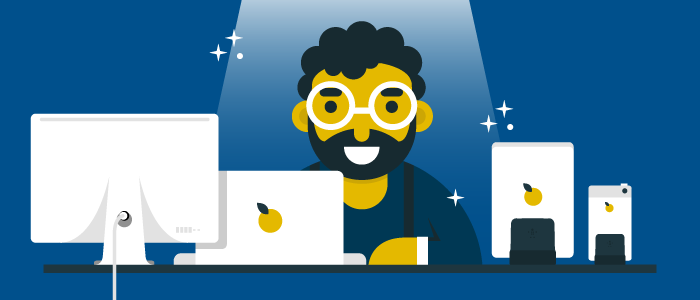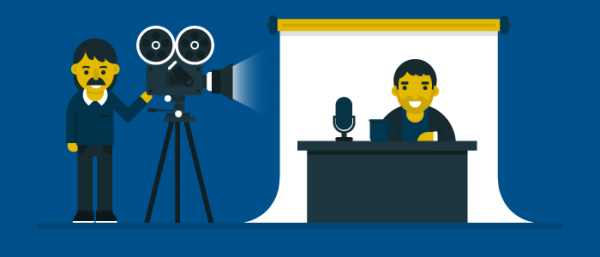
Back when many current print journalists were beginning their careers, their job descriptions looked very different than they do now. There was no such thing as multi-platform journalism.
Yes, the basic idea of being a journalist is still the same – finding, researching, investigating, and writing pieces that share important news and tell a story. However, how that is accomplished and what happens after an article is written are where some of the biggest changes have taken place. In the past, once a journalist finished his or her work, they’d submit to their editor, clock out at 5pm, and head home for dinner. The editor would publish the article on one platform, like a newspaper or a magazine, and the journalist was free to move on and begin writing another piece.
[text_ad]
Today, multi-platform journalism is the norm. There is a 24/7 news cycle and journalists need to be publishing their content on many different platforms to keep up with demand and how their readers are choosing to find them. With multi-platform publishing, journalists are focusing on creating content that can make an impact online, offline, and in person.
Multi-Platform Journalism: Not Your Grandpa’s Morning Paper

Okay, so your grandpa probably does or did still get his morning paper – but there are so many different ways his favorite stories are being created, distributed, and promoted. Someone who was a journalist before the dawn of the digital age would have been dumbfounded to learn about these tasks that are now expected of many modern-day journalists:
Live Editing: Once an article is published in a print publication, you’re out of luck when it comes to any grammatical mistakes, factual errors, or updates. However, now that most of that content is also available online, journalists may find themselves editing their pieces once they’ve already been shared on the internet. If they misspell an interviewee’s name, they can sign in from their home computer, log in to their publication’s website, fix the name, and publish the change – all before they brush their teeth and go to bed. Additionally, if they published a developing story earlier in the day and they’ve uncovered some important updates, they can easily work them into a story without having to completely rewrite the article.
Photography and Video: Professional photographers have long played an important role in journalism, but our fast-moving world (and budget cuts) have changed how photos and videos are integrated into storytelling. In “Emerging Skills for Journalists,” a 2014 report commissioned by the National Council for the Training of Journalists, one anonymous employer was quoted as saying:
“The better visual material continues to be captured by professional photographers, but the advent of smartphones, etc., has given non-photographers the opportunity to capture acceptable images in an instant. A news event might well provide many images from readers.”
Because our phones are now outfitted with fancy cameras, multi-platform journalists find themselves tasked with taking “acceptable images” and videos that are easily uploaded and shared in an instant.
Social Media: Social media sites like Facebook, Twitter, LinkedIn, Snapchat, TikTok and Instagram have created a totally new playing field for journalists. By creating public profiles and personas, journalists must put on their marketing hats and promote their articles and the publications they work for. Just wrote a newsworthy story? Tweet it out or post it on Facebook. Looking for subject matter experts to interview? Seek them out on LinkedIn. Covering breaking news or discover something interesting? Take a picture and post it on Instagram.
Social media also makes journalists available to their readers in a way that was never possible before. Multi-platform journalists are becoming more than just their bylines due to the ability to interact 1-on-1 with their audience. They can answer questions, respond to criticism, or even share small bits about their personal lives if they so choose, and if their employer allows it.
Things Are Only Getting Faster

Martin Baron, executive editor of The Washington Post, gave a lecture a couple years ago at the University of California, Riverside. The title of his speech was “Journalism’s Big Move: What to Discard, Keep, and Acquire in Moving from Print to Web.” He made a very interesting point about multi-platform journalism: you can’t fight it, and things are only going to get faster.
Baron reminded the audience about all of the amazing changes that have taken place online in the last decade, including:
-
High-speed broadband becoming the norm in 2004 and 2005. This is what lets us load photos and videos instantly, as well as enjoy a mobile connection.
-
The world of social media developed into what it is today. Facebook was founded in 2004, YouTube came in 2005, Twitter was in 2006, Instagram debuted in 2009, and TikTok launched in 2016, each platform with anywhere from hundreds of millions of users to multiple billions.
-
The introduction of the iPhone in 2007. We had cell phones before 2007, but the iPhone revolutionized the world of smartphones and how we digest and create content on the go.
Multi-platform journalism is vastly different than journalism 50 years ago – even 10 years ago – but that’s not a bad thing. Changes in technology have allowed journalists to learn new things, write and share articles quickly, and build and interact with their readers on a more personal level.
How has the rise of multi-platform journalism changed your job? What do you love about it? What’s a little tougher? Leave a comment below!
Editor’s note: This article was originally published in 2015 and has been updated.



Thanks for sharing the great article. and useful information. Visit us: https://www.theprloop.com/event-diary/